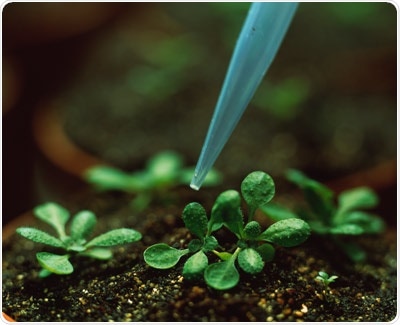Plant researchers from RIKEN identified that plants are capable of reusing specialized metabolic products and break them down to recover nutrients required for fundamental metabolic activities. Deactivating the enzyme responsible for this process can enhance the synthesis of health-promoting chemicals in crops in the future.

Thale cress (Arabidopsis thaliana) is able to recycle specialized metabolic products to extract nutrients needed for basic metabolism. Image Credit: Mauro Fermariello/Science Photo Library.
Along with synthesizing sugars and other molecules involved directly in their growth and development, plants also synthesize a wide range of secondary metabolites—specialized molecules that enable them to adapt to their environment and interact with their ecosystem, like offering defense against planting-eating animals.
Researchers were curious whether the nutrients utilized to produce secondary metabolites can be released and reused in primary metabolism.
Researchers headed by Masami Hirai at the RIKEN Center for Sustainable Resource Science investigated this question by analyzing if Thale cress can employ the secondary metabolite glucosinolate as a source of sulfur. Glucosinolates are partially responsible for the pungency of vegetables like horseradish and mustard, in addition to the nutritional value and health benefits of Brussels sprouts and broccoli.
The researchers raised the plants in cultures with no sulfur, differing amounts of sulfur, or a glucosinolate. Plants grown without sulfur exhibited severe growth defects, while those raised with glucosinolate showed normal growth. This revealed that the plants used sulfate in the provided glucosinolate as an alternative source of sulfur.
Sulfur-concentration measurements disclosed that the seedlings accumulated more sulfur than plants raised with the same amount of sulfate. This prompted the researchers to presume that the plants also used other sulfur atoms (that is, non-sulfate sulfur atoms) from the glucosinolate.
For analysis, the researchers created glucosinolates in which the sulfur atom making up a key bond in the molecule was a heavier isotope so that they could track it through later metabolic processes.
They discovered that the labeled sulfur accounted for 28%–42% of various sulfur-containing amino acids in the seedlings, clearly exhibiting the breakdown of the provided glucosinolate and its reincorporation into primary metabolism.
I was very excited to see this. Since the potential role of glucosinolate as a sulfur reservoir has been discussed based on the sulfate group, we were surprised that the other common sulfur atom is also available as a source. This supported the presence of a systematic breakdown pathway in plants.”
Ryosuke Sugiyama, Study Lead Author, RIKEN Center for Sustainable Resource Science
“Although the potential recycling of secondary metabolites has been discussed for decades, there had been no direct evidence showing its physiological advantage. Our findings show that an important secondary metabolite is recycled by plants and can thus serve as a reservoir of nutrients for primary metabolism,” concluded Sugiyama.
Source:
Journal reference:
Sugiyama, R., et al. (2021) Retrograde sulfur flow from glucosinolates to cysteine in Arabidopsis thaliana. Proceedings of the National Academy of Sciences USA. doi.org/10.1073/pnas.2017890118.